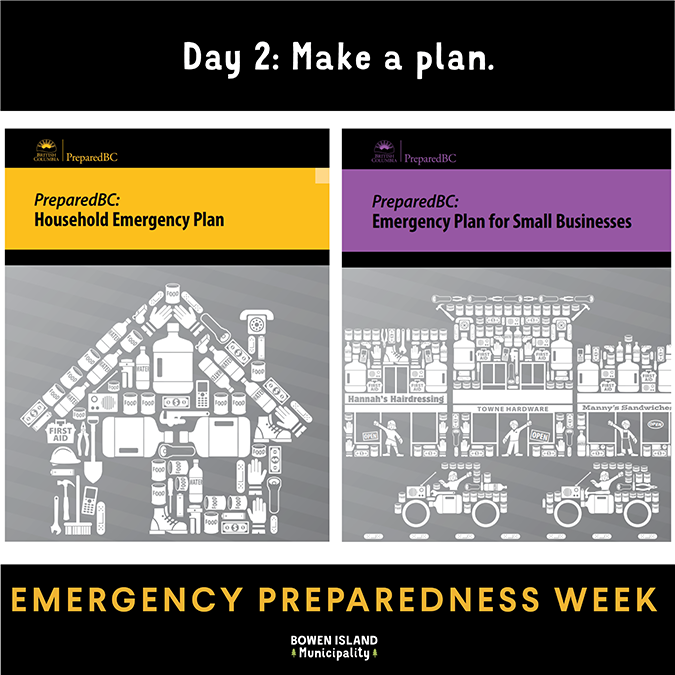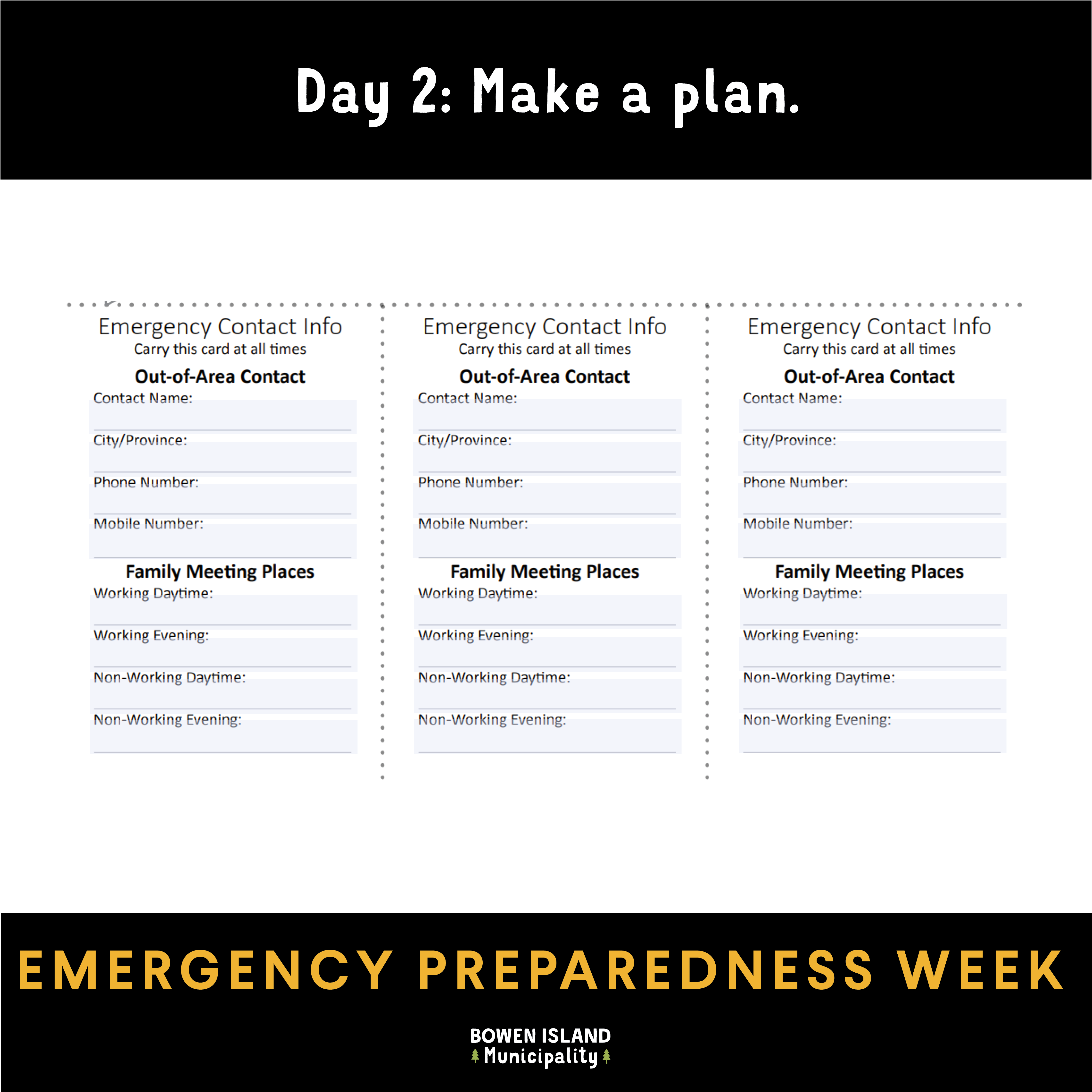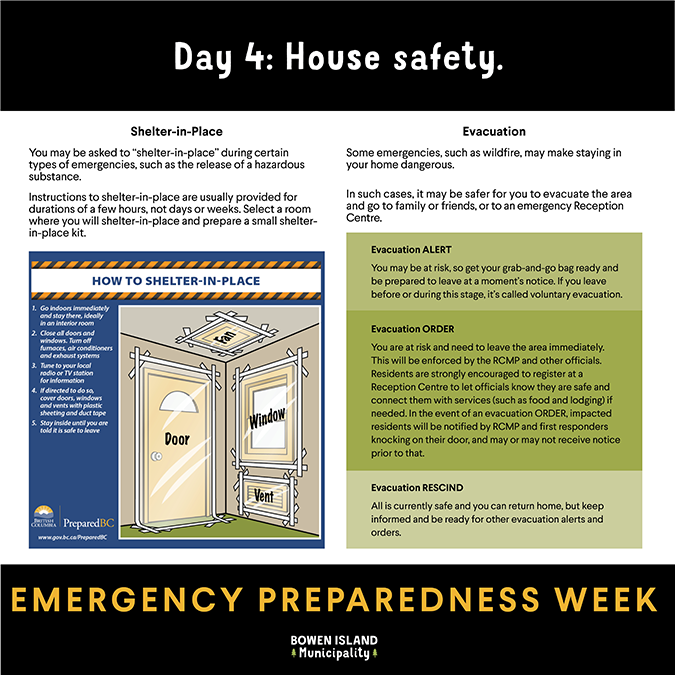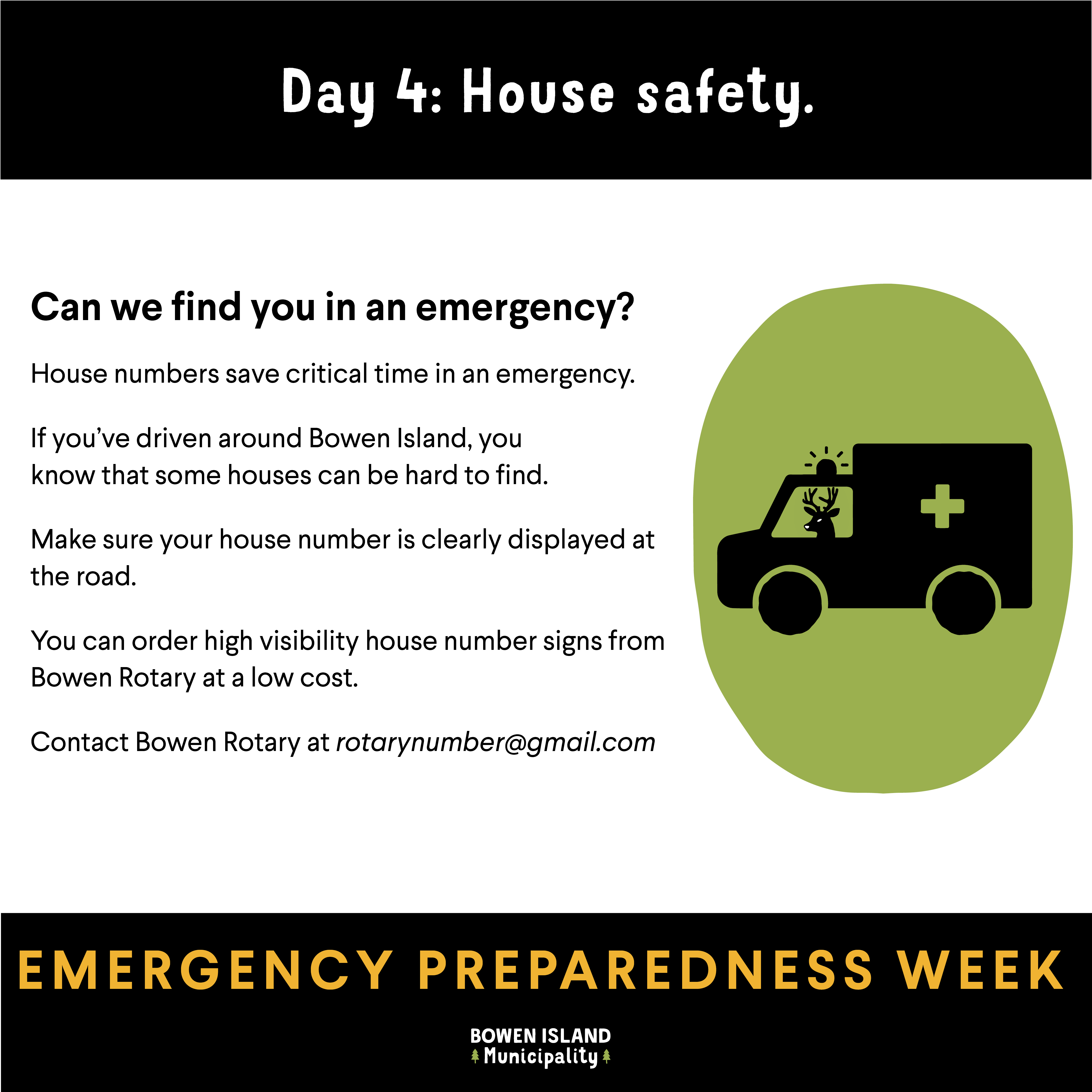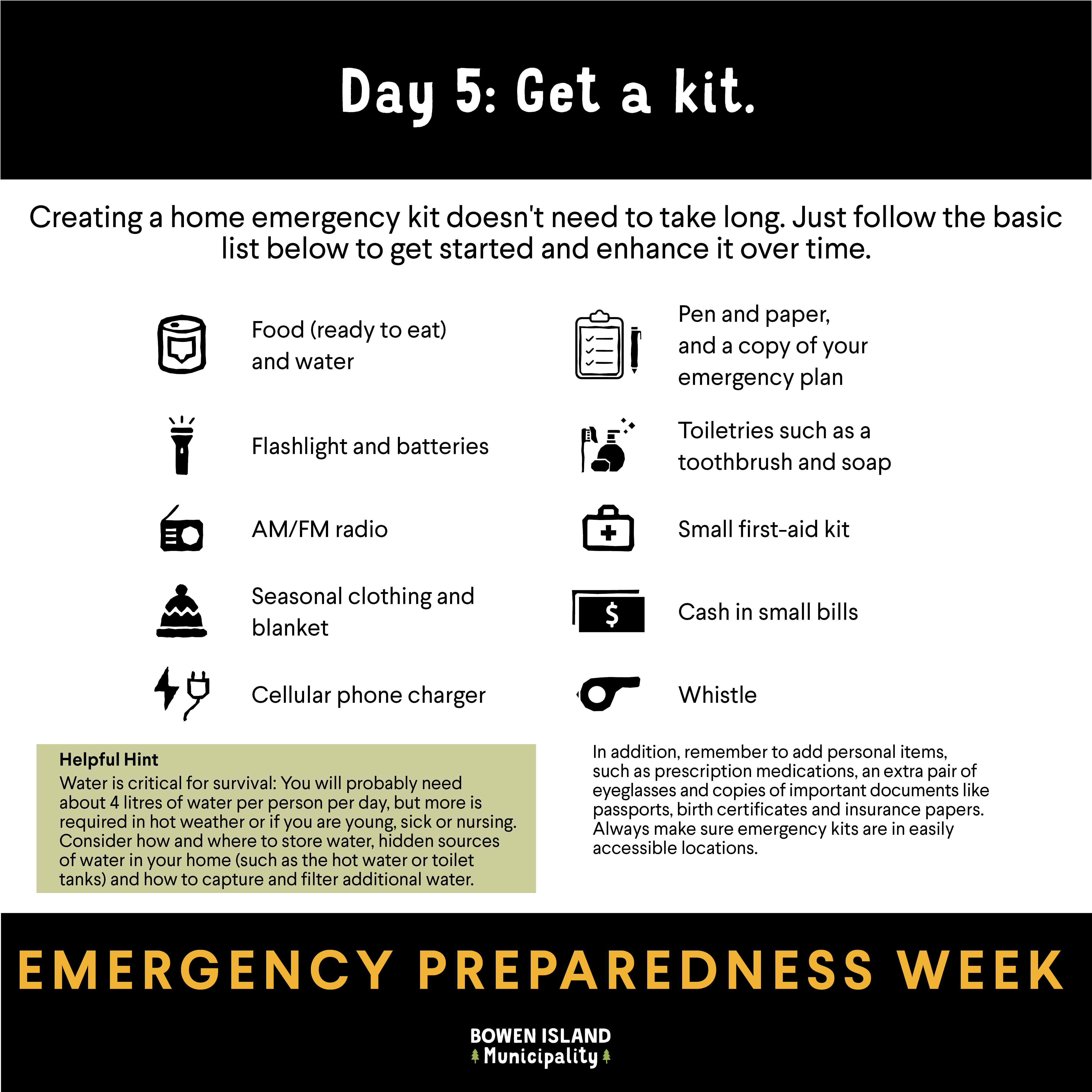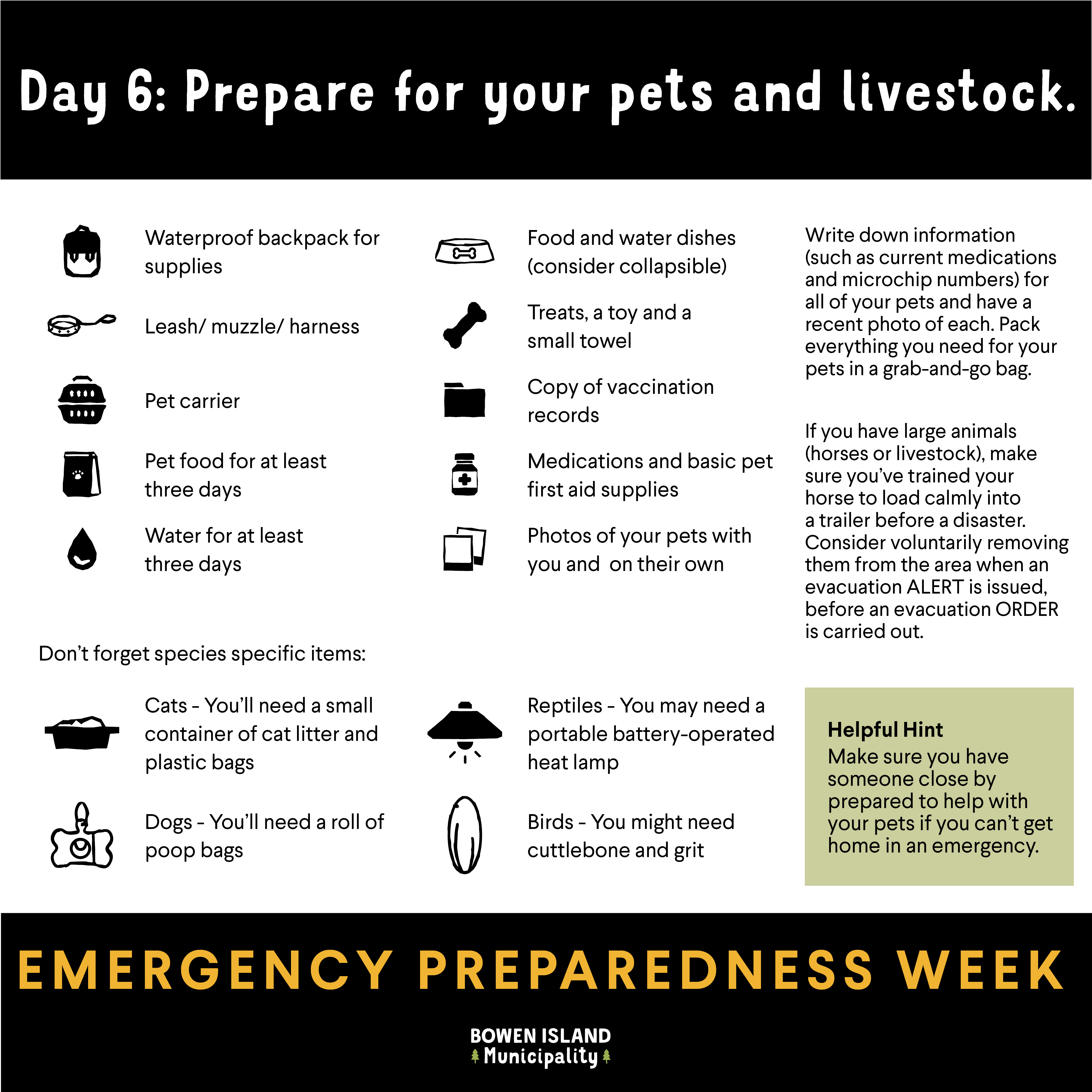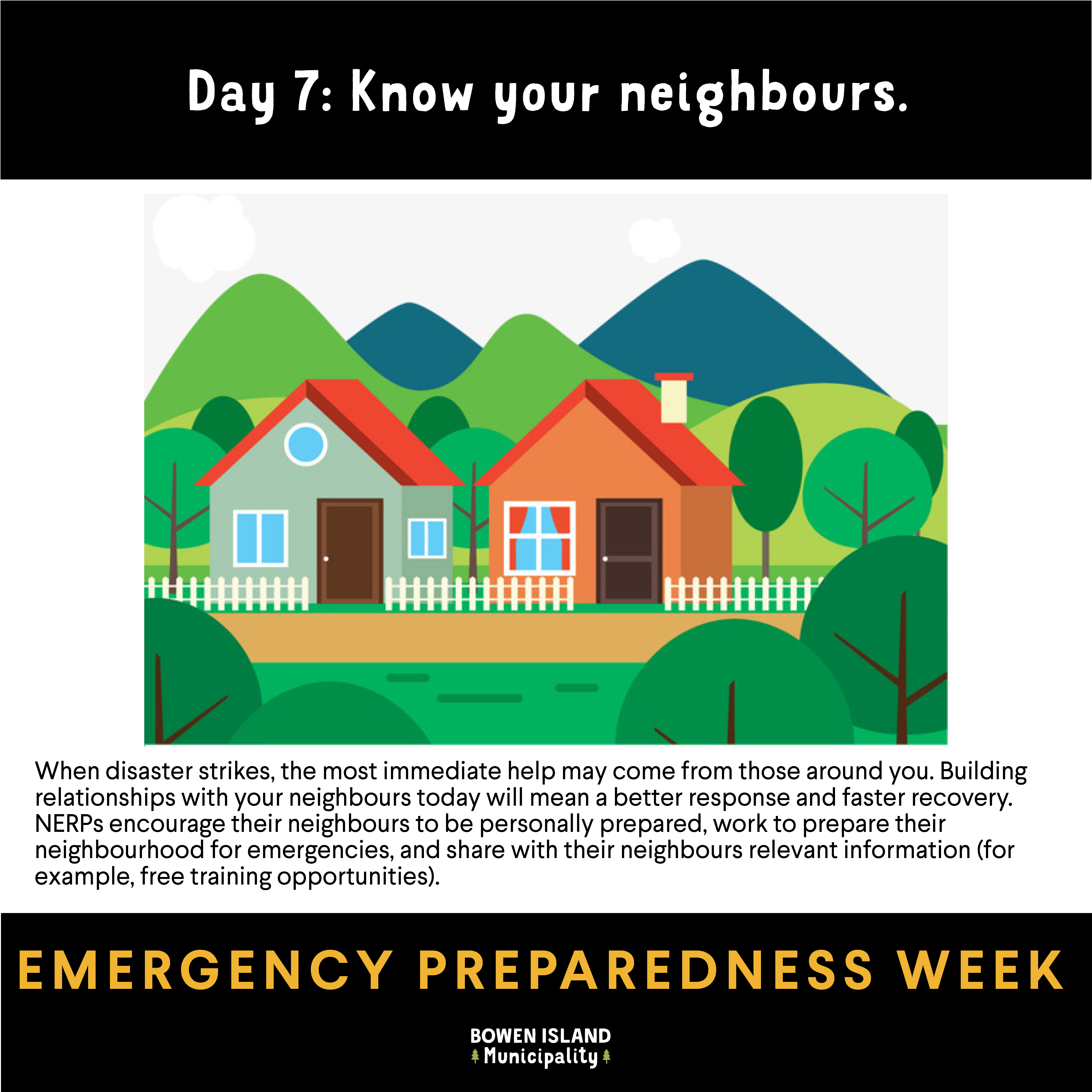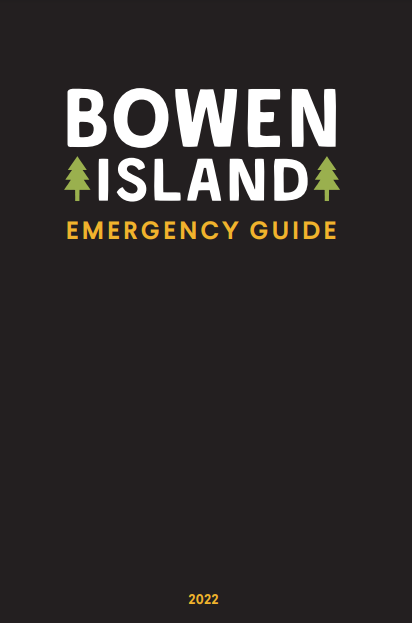Emergency Preparedness Week
Bowen Island joins jurisdictions across Canada in marking May 1 to 7, 2022 as Emergency Preparedness Week.
Safety begins at home with individual and family preparedness. When disaster strikes, emergency workers may not reach everyone immediately, or even for several days. Families should be prepared to take care of themselves for a minimum of 72 hours, and ideally for longer. The impacts of any emergency or disaster can be lessened by knowing what to do before, during and after an emergency and by identifying the risks, having a plan and a kit prepared.
During Emergency Preparedness Week, islanders are encouraged to take simple steps to become better prepared to face a range of emergencies:
- Know the risks specific to our island community
- Develop a family emergency plan and practice it
- Prepare emergency kits for your home and your vehicle
Are you registered for emergency notifications?
The Bowen Island public notification system is now powered by Alertable. It can quickly and effectively notify residents by calling your home phone, cell phone or work phone, sending a text, and/or emailing you important information or instructions.
Emergency Preparedness Week Themes
Earthquakes, wildfires, and severe weather are some of Bowen Island’s most likely hazards. You can read about these and more hazards in the Hazard, Risk and Vulnerability Assessment.
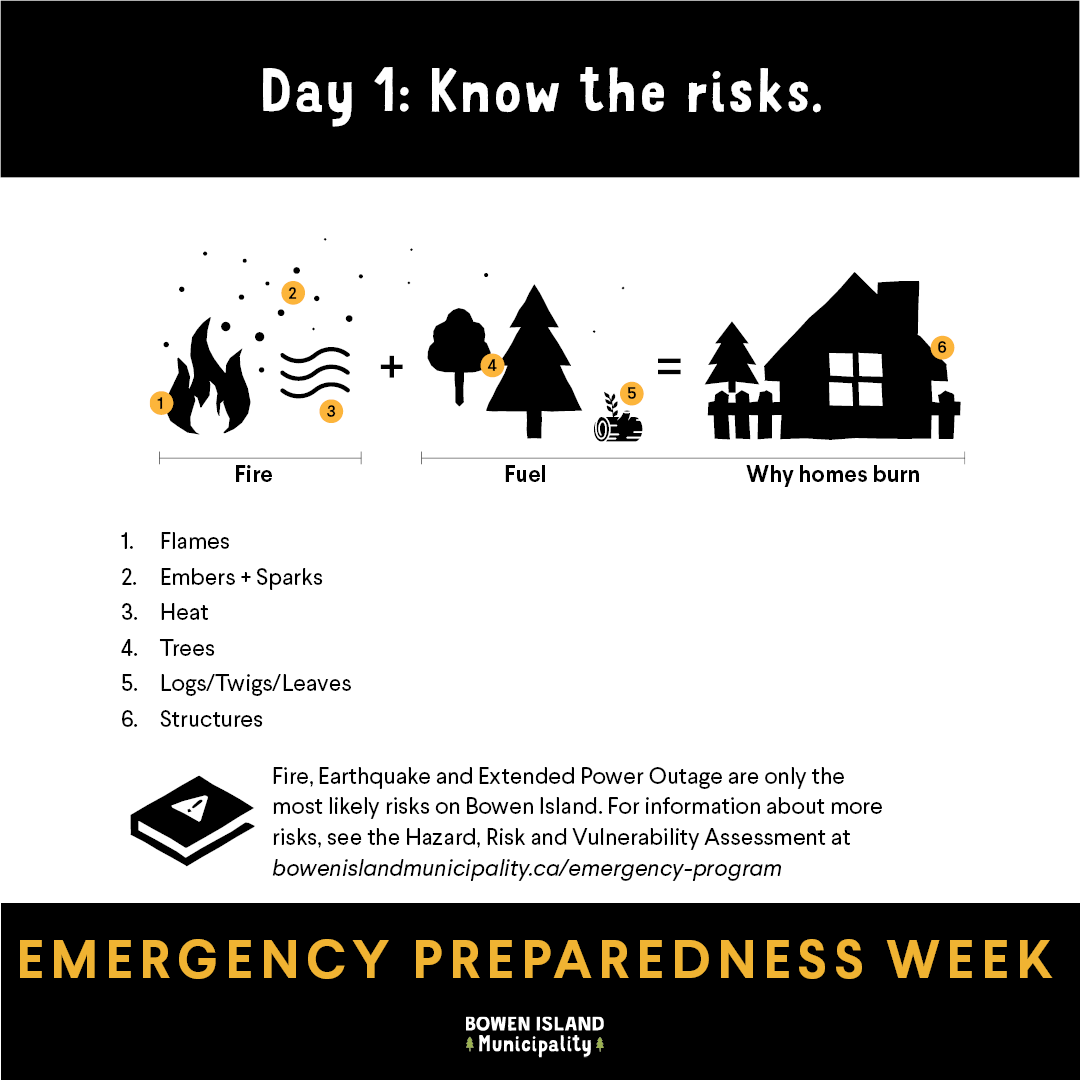
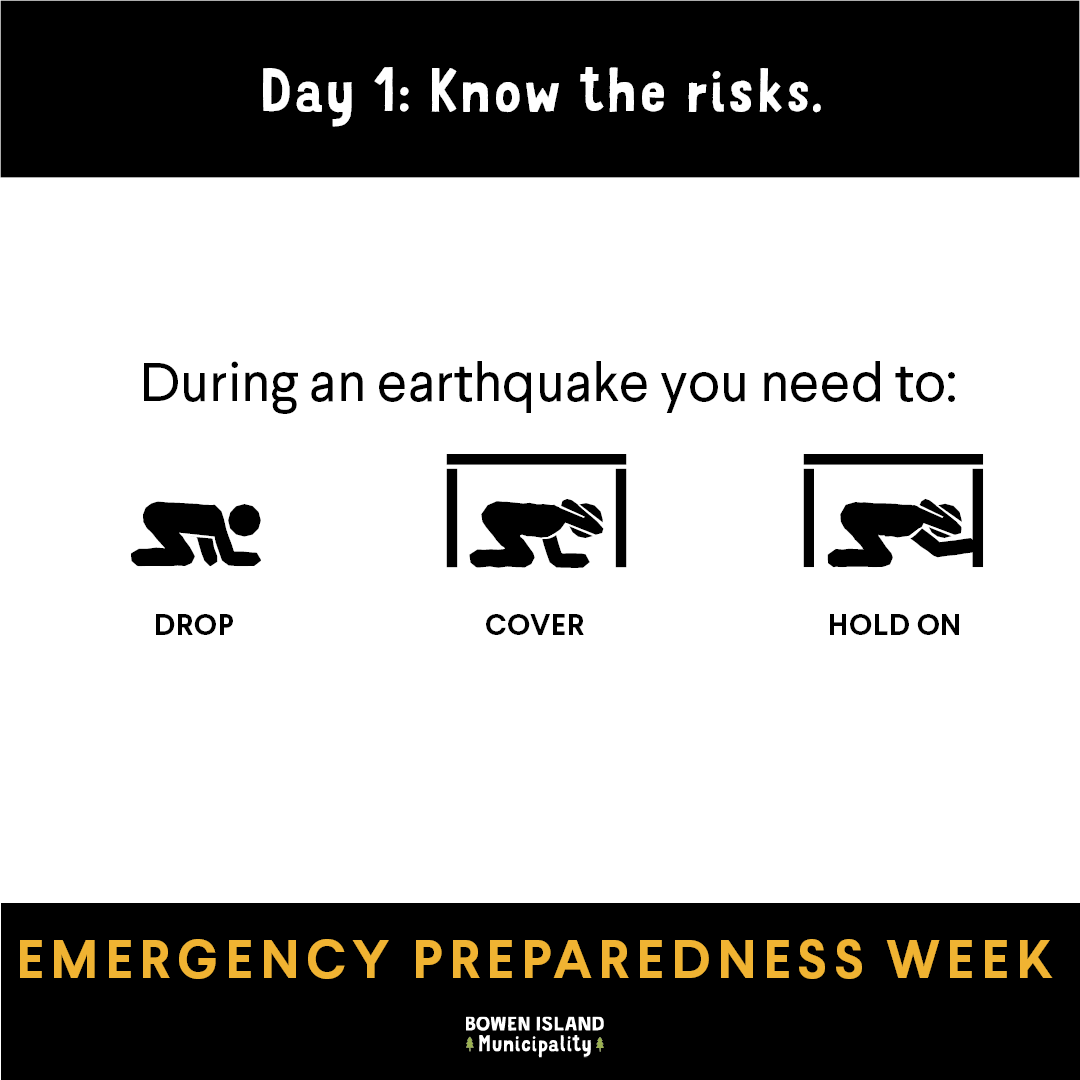
Having an emergency plan will help you be more prepared and better able to cope with the stress of emergencies. You can download a fill-in-the-blank emergency plan for your family, home or business from PreparedBC.
There’s also lots of resources at getprepared.gc.ca.
Do you know where to get information before, during, and after an emergency?
- Bowen Island Municipality website
- Prepared BC
- Getprepared.gc.ca
- Emergency Management BC on Twitter and Facebook
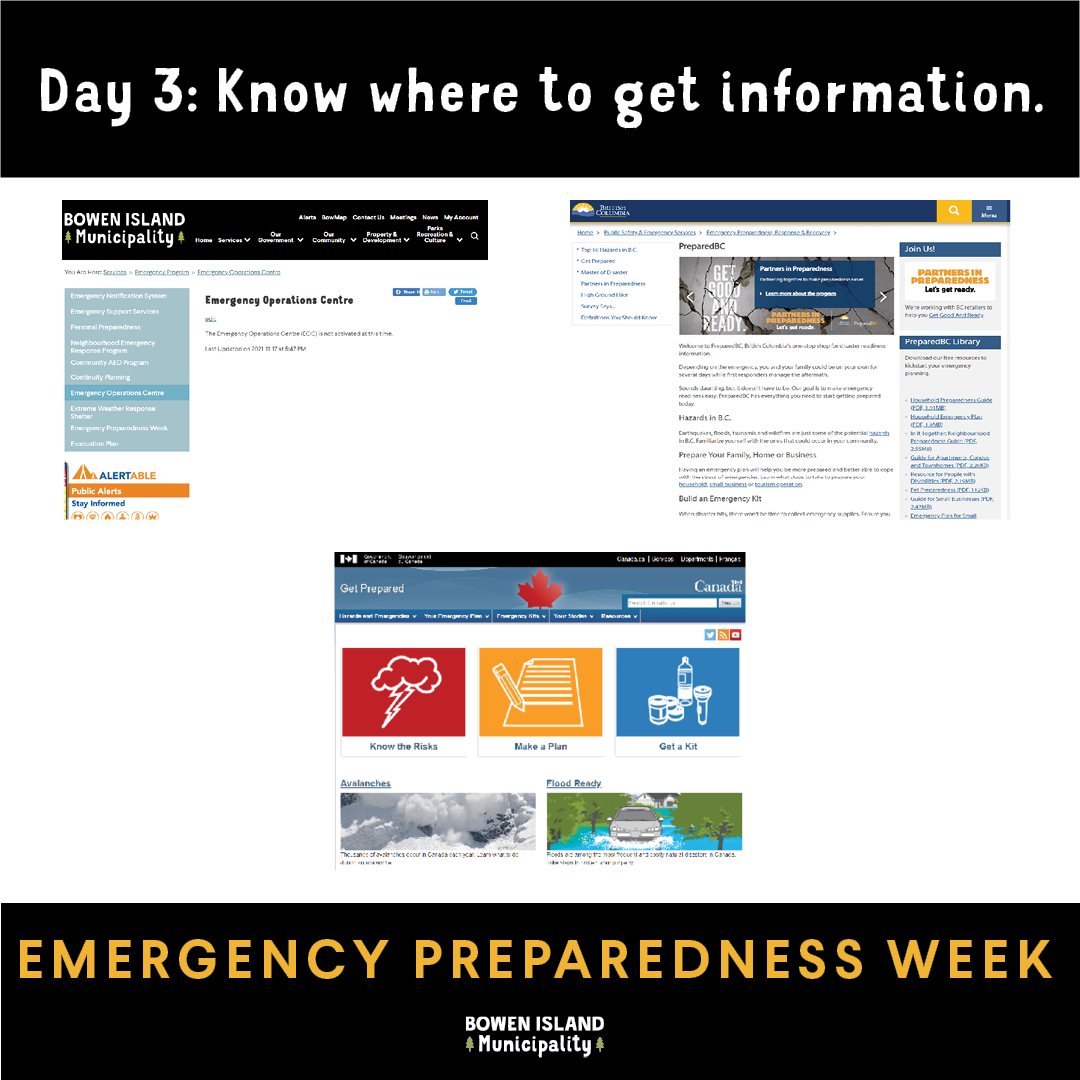
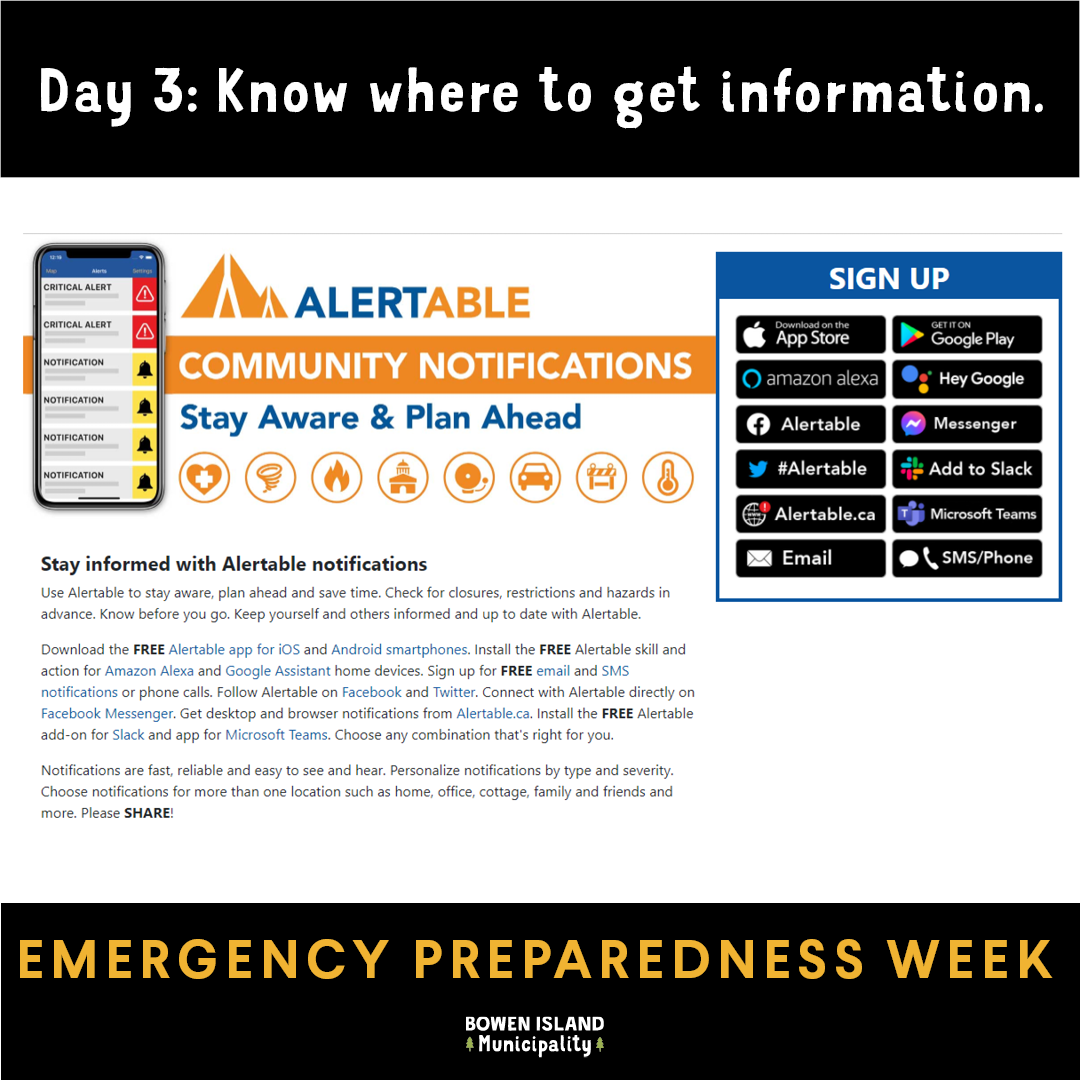
Depending on the emergency, you and your family could be on your own for several days while first responders manage the aftermath.
Do you know what to do if you are advised to shelter-in-place?
- Go indoors immediately and stay there, ideally in an interior room
- Close all doors and windows. Turn off furnaces, air conditioners and exhaust systems
- Tune to the local radio or TV station, or go to the municipal website for information
- If directed to do so, cover doors, windows and vents with plastic sheeting and duct tape
- Stay inside until you are told it is safe to leave
Do you know the difference between an evacuation ALERT and an evacuation ORDER?
- Evacuation ALERT: You may be at risk, so get your grab-and-go bag ready and be prepared to leave at a moment’s notice. If you leave before or during this stage, it’s called voluntary evacuation.
- Evacuation ORDER: You are at risk and need to leave the area immediately. This will be enforced by the RCMP and other officials. Residents are strongly encouraged to register at a Reception Centre to let officials know they are safe and connect them with services (such as food and lodging) if needed. In the event of an evacuation ORDER, impacted residents will be notified by RCMP and first responders knocking on their door, and may or may not receive notice prior to that.
- Evacuation RESCIND: All is currently safe and you can return home, but keep informed and be ready for other evacuation alerts and orders.
When disaster hits, there won't be time to collect emergency supplies. Ensure you have emergency kits for your home, workplace and vehicle. They should all contain food, water and supplies for a minimum of 72 hours. A week or longer is better.
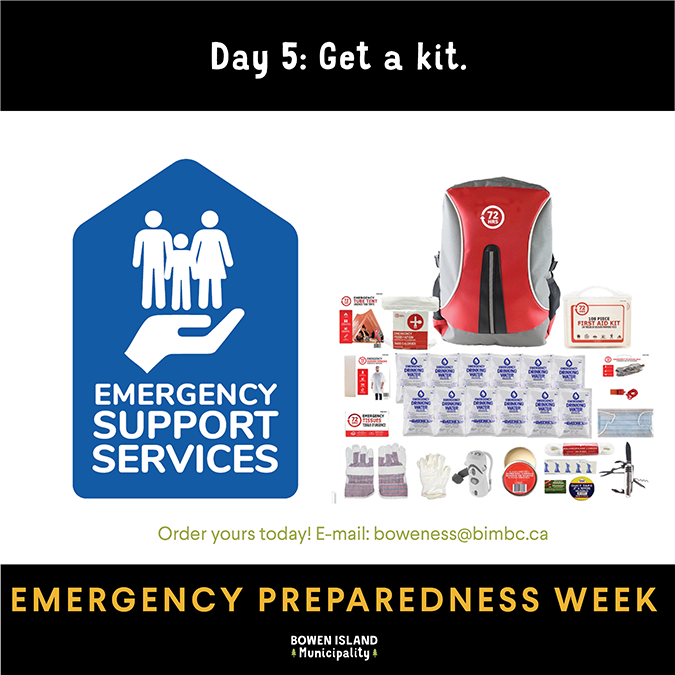
Don’t forget to make a plan for your pets and livestock. Write down information (such as current medications and microchip numbers) for all of your pets and have a recent photo of each. Pack everything you need for your pets in a grab-and-go bag.
Include items such as:
- Pet food and water for at least three days
- Food and water dishes
- Pet carrier
- Poop bags, cat litter
- Leash/muzzle/harness
- Medications and basic pet first aid supplies
- Copy of vaccination records
- Photos of your pets
If you have large animals (horses or livestock), make sure you’ve trained your horse to load calmly into a trailer before a disaster. Consider voluntarily removing them from the area when an evacuation ALERT is issued, before an evacuation ORDER is carried out.
When disaster strikes, we're in it together. The most immediate help following a disaster will come from those directly around - your neighbours. Connecting with them today, and working together to prepare, will mean a better response and faster recovery.
Read about Bowen's NERP program - Neighbourhood Emergency Response Program.
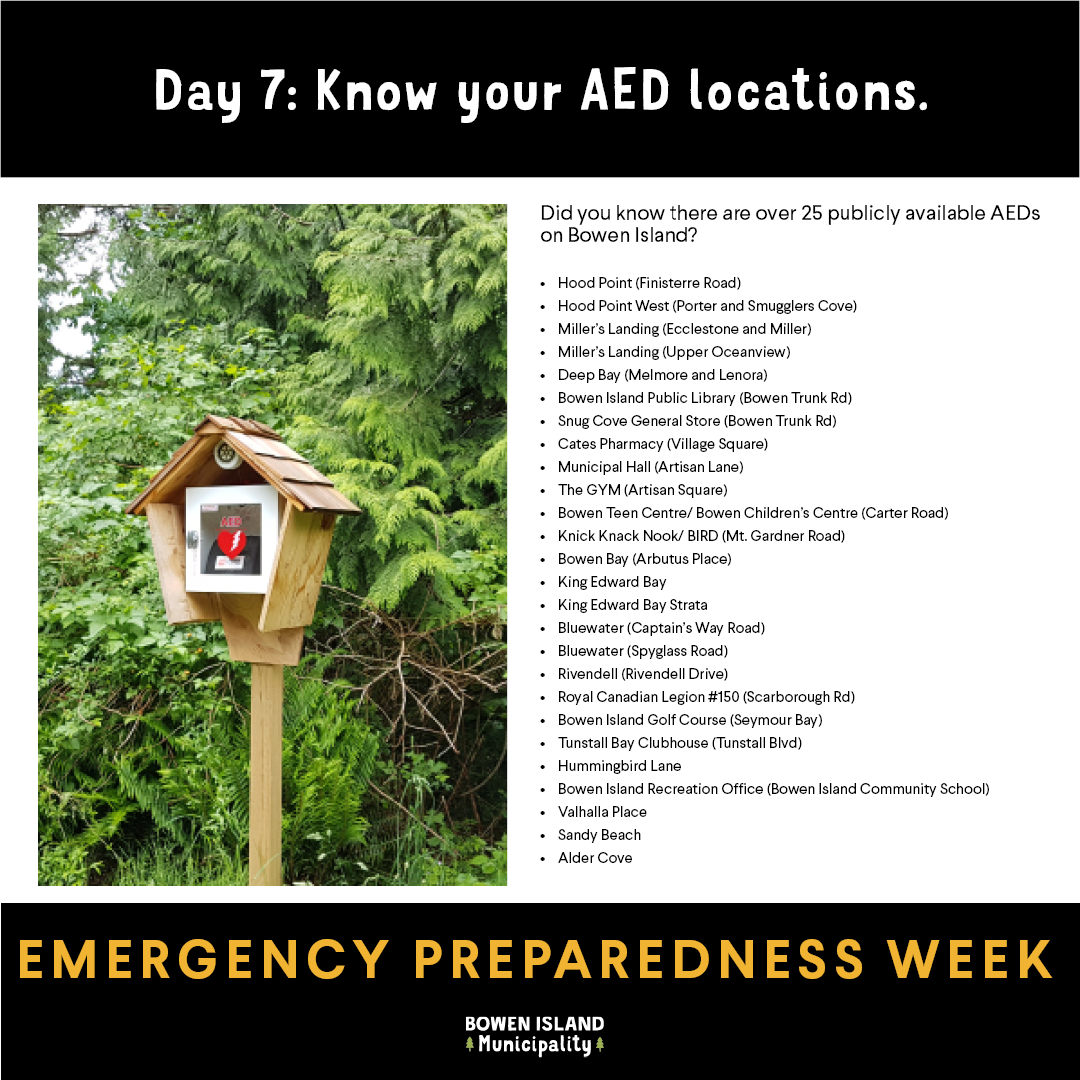
Emergency Guide
We've updated the Emergency Guide for islanders in 2022. You can order your free copy at Municipal Hall or download it from our website.
More resources:
Last Updated on 2022-04-29 at 12:27 PM




